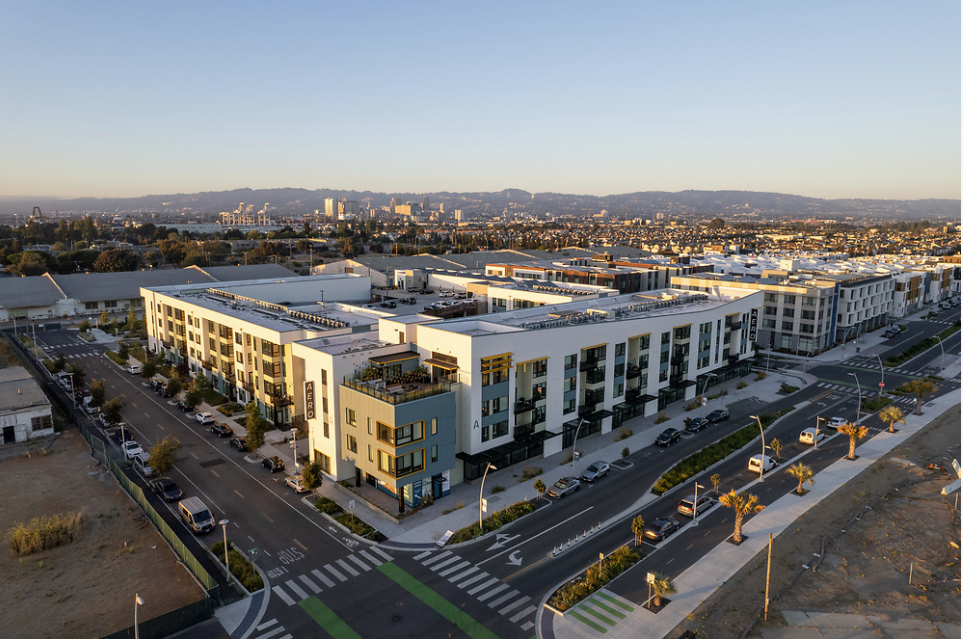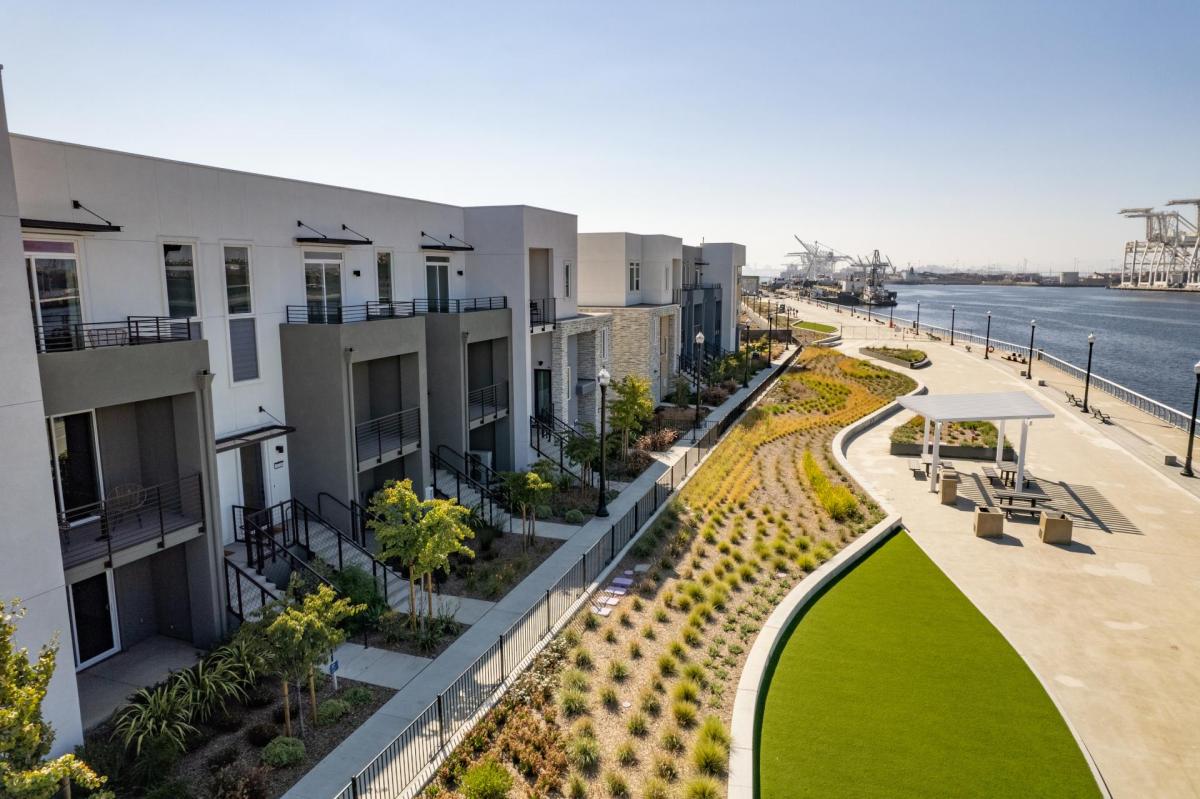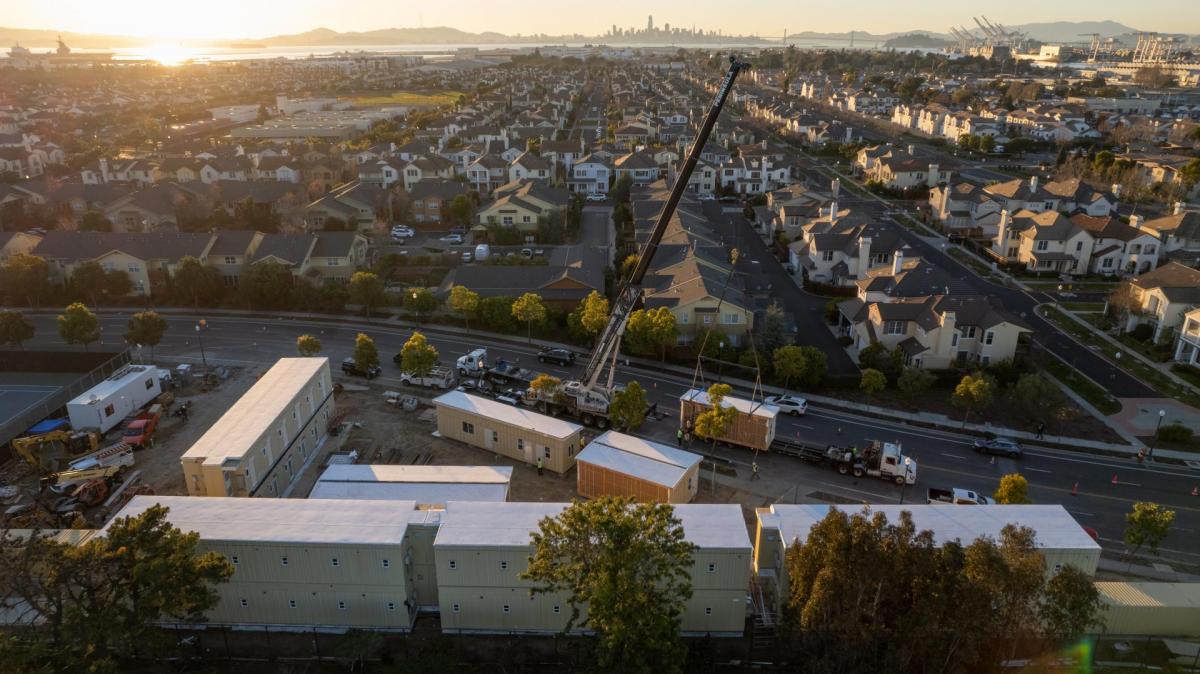Alameda’s journey from restrictive to pro-housing policies
Sarah Henry is the communications director for the city of Alameda and can be reached at shenry@alamedaca.gov. Andrew Thomas is the city’s planning, building, and transportation director; he can be reached at athomas@alamedaca.gov.
How did Alameda (pop. 77, 287) become the first Bay Area city to have its 2023-31 Housing Element certified by the state? Like a good song, we have a strong chorus (community buy-in) and a great melody (community consensus). And much like an emerging artist, we proactively invested in the process and tools needed to create a new housing element and the over 100 pages of zoning amendments needed to make 5,353 housing units in eight years possible.
We’ve put together a personalized playlist to help you do the same. The Bay Area’s island in the sun has done it and we know you can too!
A Change is Gonna Come
Like many other cities, Alameda has a long history of restrictive policies that limit housing construction and conflict with the state’s housing laws. We knew we needed to add more housing than some residents wanted. But we also had a moral imperative to add more housing.
Home prices and rents have skyrocketed in our community. Far too many people sleep on the street and in parks. Students go home to the cars they live in. People who grew up in Alameda can’t afford to raise their own families here. Our teachers, first responders, and health care workers can’t afford to live in the community they serve.
Our new housing element won’t solve everything. But it is the blueprint for how we will meet the housing needs of all current and future members of our community — and the start of a more equitable Alameda.
The Times They Are A-Changin
We knew it would be difficult to adopt a new housing element and build the amount of housing our community needed given our previously restrictive and discriminatory land use regulations. So we started early. We began updating all the other elements of the general plan three years before we needed to finish the housing element. This allowed us to extensively discuss citywide goals and values with the community.
At the end of the two-year process, the community settled on four overarching values for the city. Goal number one: Promote a healthy, equitable, and inclusive city. As we settled on this goal, the murder of George Floyd reminded all of us that there is still much work to be done locally and nationally.
This agreed-upon commitment allowed us to shift the focus of the conversation. We redirected the discussion to focus on our shared obligation to provide housing, as well as the need to stop singing the restrictive and discriminatory housing policy tune and start singing for policies and actions that affirmatively further fair housing.
We all agreed that Alameda needs to be an inclusive, diverse, and equitable community. That made it hard for community members to argue that Alameda doesn’t need to address the needs of those without housing or that certain neighborhoods don’t need to accommodate that new housing.
With A Little Help from My Friends
The planning staff played a big role in writing the housing element song, but they did not do it alone. Our approach was simple. Prepare the first draft quickly. Make sure that it complies with state law. Then let the community review it and tell us how it can better reflect community values, priorities, and goals. Then press repeat. We produced seven drafts over two years using this play, listen, revise process.
With each monthly public meeting, the song got better and better. We held 25 meetings and workshops. We used online forums, planning board meetings, weekend meetings, and large outdoor gatherings. We created surveys and tools where residents could create their own housing plans with different sites and different densities.
Throughout the process, we maintained one simple rule: All drafts and public suggestions must provide for the Regional Housing Needs Allocation and affirmatively further fair housing by confronting existing exclusionary and discriminatory policies. The Alameda community responded to the challenge. Participation was higher than normal and included targeted outreach to Alameda’s youth and formerly unhoused residents. In the end, we produced a housing element that both addresses the state’s requirements and reflects local priorities and values.
“Alameda didn’t just survive a political stress test, the city aced it,” said Drew Dara-Abrams, a member of the housing element working group. “Instead of just exporting our housing needs to the suburbs of Phoenix, Alameda reached a consensus to enable more multifamily housing in our walkable business districts and our well-resourced neighborhoods, including the lovely neighborhood where my family and I live and own.”
Another Brick in the Wall
We were successful because we had the public’s trust. And we had the public’s trust due to extensive education, engagement, and collaboration. Once the city and the community had reached a consensus, the focus was on the parts of the plan we could shape and how these new units would best fit Alameda.
Alamedans value equity and inclusion. They want Alameda to be a diverse community. And they have typical concerns about traffic and how building heights can change the aesthetic of their surroundings. They want to preserve our historic buildings.
In our initial draft of the housing element, we recommended raising the height limits in Alameda’s two historic mixed-use downtown commercial districts. The community raised concerns that these changes could result in large buildings that feel out of place. To solve this, the final plan includes design standards that ensure taller buildings will be compatible with their surroundings.
By working together with the community, we increased the capacity for more housing while ensuring urban design excellence for the next generation of Alamedans.
I Can See Clearly Now
How did Alameda become the first city or county in the Bay Area to have its housing element certified? To recount: We started early. We had a communitywide conversation about equity, diversity, and inclusion. We emphasized and reminded ourselves, that if we believe in equity, no neighborhood is better than another neighborhood. Every neighborhood must share the responsibility to provide housing.
We faced opposition but were ultimately supported by the community. Paul Foreman, an Alameda resident and advocate for good governance participated in every major public hearing. He also argued against the staff recommendations and consistently recommended that the city council not approve the housing element.
“I support over 97% of our 6,424 unit housing element, but with a strong objection to the 160 units projected for infill residential sites,” Foreman said.
We can’t please all people all of the time. Nonetheless, their feedback is important and makes each day a beautiful day in Alameda.




